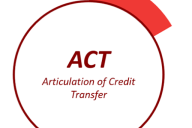You have /5 articles left.
Sign up for a free account or log in.
Institutions that are putting the needs of their students first are often also committing to the principles of open standards because of the strategic benefits they provide to the learner and to the institutions. Open standards have the potential to give learners greater control over their learning journey, their achievements and skills, and their future. Many readers of Inside Higher Ed may know IMS Global Learning Consortium for its interoperability standards such as LTI and Common Cartridge for instructional design, and Caliper for learning analytics. In recent times, IMS members have turned their attention to a newer, more outward-facing vision for interoperability that involves portability of learner pathways and achievements in the form of open competency and skills frameworks and digital credentials: Open Badges–based microcredentials and a Comprehensive Learner Record Standard (CLR Standard).
IMS members’ vision acknowledges that postsecondary learning happens in many contexts and most often not in one continuous four-year block of time. Recognition of prior learning and noncredit skills, credit mobility and equivalency, and program alignment to industry in-demand skills are important subjects, each with its own policy, practice and technology dimensions. IMS and our members work across partner organizations such as AACRAO, Credential Engine and UPCEA to coordinate efforts in support of a learner-centric education ecosystem.
One such effort is the Wellspring Initiative, which in its most recently concluded projects set out to explore and demonstrate the benefits to learners when institutions’ learning outcomes are aligned to industry competency standards or to employer’s work qualifications. The project involved institutions and their employer partners sitting down and doing the hard work of comparing and aligning program learning outcomes with the competencies required to perform specific jobs like environmental technician, customer service representative and project accountant. Six brief case studies were produced to share the lessons learned that each organization shared during project completion interviews. The lessons learned are offered to inform the community engaged in industry alignment efforts and also guide subsequent priorities for Wellspring research.
The Wellspring Initiative also included the development of demonstration software to show the benefits of digital credentials for learning empowerment and mobility. Wellspring demonstration software included an applicant tracking system with a candidate-ranking algorithm that rates candidates based on the verified contents of their CLR and Open Badges, with extra points awarded for alignment to a desired industry standard, placing those candidates at the top of the list for an interview. The demonstration also incorporated a digital wallet, which the learner-worker controls as the place to collect and manage their verifiable digital credentials. The digital wallet allows the individual to also create CLR-based self-assertions of their knowledge, skills and abilities with evidence that they can attach, accounting for prior knowledge and experiential learning. Endorsements that the individual has received can be included in the verifiable record, which the learner-worker can curate to create a customized collection of verifiable achievements for presentation to an employer. When an employer’s HR applicant-tracking technology incorporates the capabilities of the Wellspring demonstration, the results will be a richer, more holistic view of the individual, with a focus on skills over pedigree.
Hiring is an important use case for the Comprehensive Learner Record Standard, but certainly not the only one. Verifiable digital credentials based on open standards provide a reliable container for a lifetime of learning and experience. As a learner advances or transfers, the verifiable data in their CLR can be referenced by the enrolling organization, including detailed outcomes and evidence of learning. For organizations that use the CASE standard, program, course and outcome equivalencies can be established and referenced to more quickly and automatically award credit. Competencies that are validated by a prior organization can be recorded and incorporated into a learning pathway of the enrolling organization because the learner-worker’s records are secured, verifiable and based on an open standard. The learner benefits by the scalability and interoperability made possible by an open standard.
Prioritizing the needs of the learner in this new era, when it is more likely that multiple education providers will play a role in their learning experience, presents a challenge to traditional thinking for an institution. Enhancing mobility for the learner-worker, whether the subject is awarding credit for prior learning to advance academically, or documenting skills so the learner-worker can advance to a better job, requires an organizational mind-set that puts the learner first and enables them to control their achievements through digital credentials based on open standards.
Further details about the Wellspring Initiative and numerous related institutional and employer collaboration programs will be shared at the upcoming IMS Digital Credentials Summit in Atlanta, Feb. 28 to March 2.
Mark Leuba is vice president of the IMS Global Learning Consortium.


